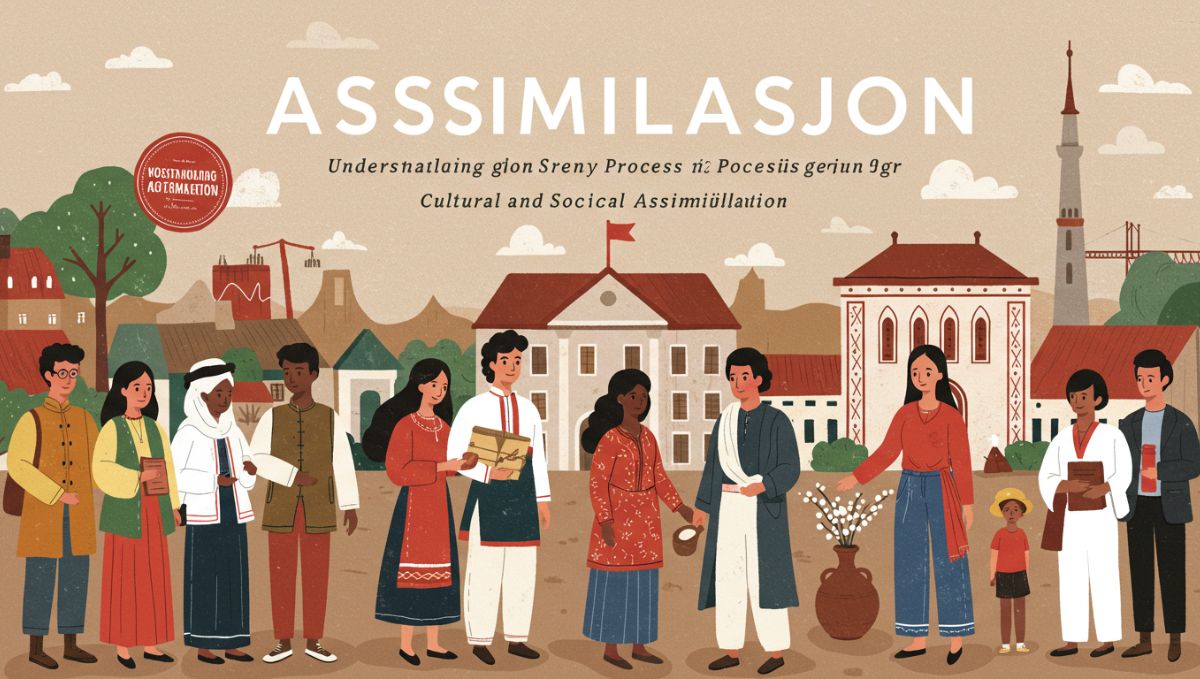In an increasingly globalized world, the movement of people across borders is more common than ever before. Migration, cultural exchange, and interaction between diverse communities have brought new opportunities—but also new challenges. At the heart of this dynamic lies the concept of assimilasjon, or assimilation, which describes how individuals or groups adopt aspects of another culture or society.
Assimilation is not a new phenomenon—it has existed throughout history as cultures have merged, clashed, and evolved. But in today’s interconnected world, the process of assimilation has taken on new forms and meanings.
What is Assimilasjon?
The term assimilasjon refers to the process by which individuals or groups gradually adopt the language, customs, values, and behaviors of another culture, often the dominant one.
Assimilation can happen voluntarily, as people seek to integrate into a new community, or involuntarily, as a result of social pressure, laws, or historical colonization. While it often involves blending into a majority culture, assimilation can also occur between minority groups or within multicultural societies.
Types of Assimilation
Sociologists and anthropologists often divide assimilation into different categories:
1. Cultural Assimilasjon
This occurs when individuals adopt the cultural practices of another group—such as food, clothing, traditions, or holidays.
2. Linguistic Assimilation
Language is a central part of identity. Linguistic assimilation happens when people shift from speaking their native tongue to adopting the dominant language, sometimes abandoning their mother tongue in the process.
3. Social Assimilation
Social assimilation involves forming relationships, networks, and communities within the dominant culture. It often includes intermarriage, participation in civic life, and acceptance in everyday society.
4. Structural Assimilation
This type refers to participation in key institutions such as schools, the workforce, politics, and government.
5. Psychological Assimilation
At this stage, individuals begin to identify themselves as part of the new culture, sometimes losing connection with their original identity.
Historical Examples of Assimilation
Assimilation has played a significant role throughout history:
-
Immigration in the United States – In the late 19th and early 20th centuries, immigrants from Europe were expected to assimilate into “American” culture, adopting English, Western dress, and social customs.
-
Indigenous Communities – Many Indigenous peoples in North America, Australia, and Scandinavia experienced forced assimilation, where their languages and traditions were suppressed.
-
Colonial Influence – Colonized nations often adopted aspects of the colonizers’ culture, from language to governance systems, sometimes voluntarily, sometimes under pressure.
Assimilation vs. Integration vs. Multiculturalism
It’s important to distinguish assimilation from related concepts:
-
Assimilation – Minority groups gradually lose their distinct identity and become absorbed into the dominant culture.
-
Integration – Minority groups adapt to the dominant society while still maintaining aspects of their cultural identity.
-
Multiculturalism – Different cultures coexist within the same society, maintaining their distinct traditions while sharing common ground.
While assimilation implies blending into one, multiculturalism celebrates differences, and integration seeks a middle ground.
The Benefits of Assimilation
Assimilation can have positive aspects for both individuals and society:
-
Easier Communication – Adopting a common language facilitates social and professional interaction.
-
Access to Opportunities – Assimilation often provides greater access to education, jobs, and political participation.
-
Social Cohesion – A shared cultural identity can reduce conflict and create a sense of unity.
The Challenges of Assimilation
Despite its benefits, assimilation also comes with difficulties and controversies:
-
Loss of Cultural Identity – Individuals may feel disconnected from their heritage.
-
Generational Conflicts – Older generations may resist assimilation, while younger generations adapt more quickly.
-
Discrimination – Even after adopting the dominant culture, minorities may still face prejudice.
-
Psychological Strain – Constant pressure to fit in can lead to stress, identity crises, and feelings of exclusion.
Assimilation in the Modern World
In today’s global society, assimilation takes many forms. Migrants and refugees often face pressure to assimilate in their new countries, while at the same time, global communication and travel allow them to maintain ties with their original culture.
Technological advancements also play a role—social media enables cultural exchange, while digital platforms can either encourage assimilation (through global trends) or preserve cultural diversity (through online communities).
Linguistic Assimilation: A Case Study
Language is often the most visible sign of assimilation. For example:
-
Many immigrant families adopt the dominant language at school and work while gradually losing their native language at home.
-
In Norway, assimilation policies once pressured the Sami people to abandon their language in favor of Norwegian.
-
Today, linguistic assimilation is still debated as societies balance the benefits of a shared language with the importance of preserving cultural diversity.
Is Assimilation Always Negative?
While forced assimilation has historically caused harm, voluntary assimilation can be empowering. For many migrants, adopting the new culture is a way to succeed, feel accepted, and build a future.
The key issue lies in choice—when people have the freedom to balance assimilation with cultural preservation, the process can be enriching rather than destructive.
The Future of Assimilation
As globalization continues, assimilation is likely to evolve:
-
Hybrid Identities – People may blend multiple cultural identities rather than fully assimilate into one.
-
Global Citizenship – Instead of local assimilation, more people may adopt a global culture shaped by technology, fashion, and international trends.
-
Policy Shifts – Governments may move from assimilation policies toward multiculturalism or integration to reflect diverse societies.
Conclusion
Assimilasjon, or assimilation, is a complex and multifaceted process. While it can help individuals adapt, connect, and succeed in new environments, it also raises concerns about the loss of cultural identity and the pressures of conformity.
In a world that values both unity and diversity, the challenge lies in finding balance—allowing people to integrate into society while still celebrating their unique heritage.
Understanding assimilation is not only about examining history but also about shaping a more inclusive future.
